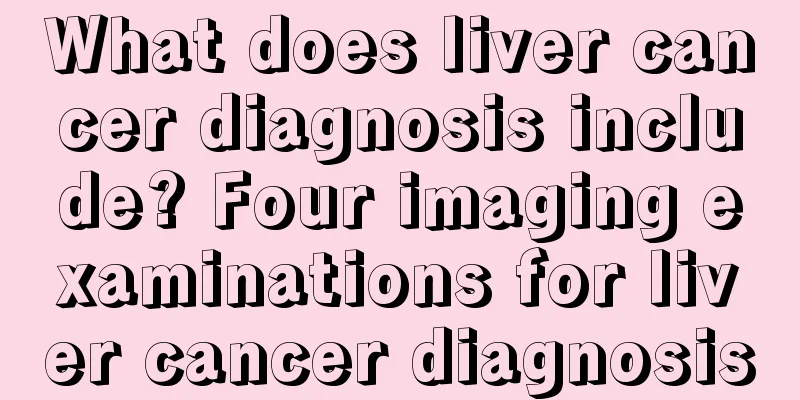What does liver cancer diagnosis include? Four imaging examinations for liver cancer diagnosis

|
The diagnosis of liver cancer must use some detection methods. There are many ways to diagnose liver cancer clinically, which are divided into imaging examinations and biochemical tests. Among them, the following detection methods cannot be ignored in the diagnosis of liver cancer: ultrasound examination, CT, pET-CT, and MRI examination. Imaging tests for liver cancer 1. Ultrasound examination: B-ultrasound examination is economical and convenient. It can show the size, shape and location of the tumor, and the diagnostic accuracy rate is about 90%. The detection rate of liver lesions is also relatively high. This is one of the examination methods for early liver cancer. Generally speaking, it takes about 4 to 6 months for liver cancer to grow from 1 cm to 3 cm. Therefore, if liver cancer is not found in the first B-ultrasound liver cancer examination, it should be taken again after 4 to 6 months. The liver cancer should still be below 3 cm, and the treatment effect should be good. 2. CT: CT is an extremely important method for liver cancer examination, and it is widely used in China. However, when the diameter of liver cancer is less than 2 cm or the density is close to that of normal liver, it is difficult to show it on CT. Liver cancer is diffuse and difficult to detect on CT; it is difficult to distinguish between primary and secondary liver cancer. 3. pET-CT: pET-CT is one of the methods for early liver cancer examination. Patients with hepatitis B and other conditions may consider the examination. pET-CT is a functional molecular imaging system that integrates pET and CT. It can not only reflect the biochemical metabolic information of liver space-occupying tissues through pET functional imaging, but also accurately locate the lesions through CT morphological imaging. At the same time, whole-body scanning can understand the overall condition and evaluate the metastasis, so as to achieve the purpose of early detection of lesions. At the same time, it can understand the size and metabolic changes of tumors before and after treatment. 4. Magnetic resonance imaging MRI is a rapidly developing examination method in recent years. In the past, MRI was not as ideal as CT examination. Now, with the continuous development of MRI technology, the scanning time is getting faster and faster, and the resolution is getting higher and higher. It can also make a relatively accurate judgment for some small lesions in the liver. Now MRI also plays a big role in the examination of liver cancer. What does the diagnosis of liver cancer include? Be sure to have a careful physical examination: Some liver cancers occur on the basis of liver cirrhosis. Therefore, these liver cancer patients may have positive signs such as mild jaundice of the sclera, liver palms, and spider nevi. Patients with advanced liver cancer may have enlarged lymph nodes, palpable enlarged liver under the ribs and xiphoid process, shifting dullness on percussion in the abdomen of some patients, and mild edema in both lower limbs. Patients with benign lesions lack the above signs. |
Recommend
How to remove oil from face
If there is too much oil on the face, it will mak...
How long can a tattoo last?
In our lives, many people like tattoos, especiall...
Are foreign men really good?
When it comes to men, do women prefer the mighty ...
Symptoms of breast edema
Girls' breasts may develop many diseases, suc...
What causes high blood bilirubin?
Blood bilirubin is what the human body turns into...
Symptoms before death from advanced esophageal cancer
Late stage esophageal cancer means that the disea...
How to effectively treat anal cyst
Anal cysts need to be taken seriously in treatmen...
What are the sounds of the fetal heart?
When women are about four months pregnant, they c...
Autumn is the best time to get rid of dampness
After the beginning of autumn, although the tempe...
What is acute febrile neutrophilic dermatosis
Because acute febrile neutrophilic dermatosis is ...
Can prostate cancer also be inherited?
There are many causes of prostate disease. They a...
Is colon cancer liver metastasis curable?
Another reason why cancer is so scary is that can...
Bladder cancer has not recurred for 5 years
As for bladder cancer, it is a very common diseas...
What is the reason for having such a good appetite
Everyone's stomach capacity is different, so ...
What to use for eye inflammation
Eye health is critical to people's lives, bec...









